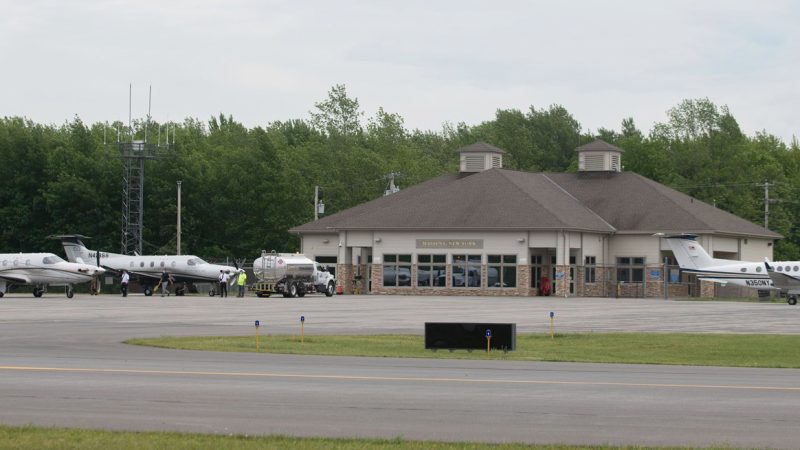Exploring the Vast Expanse: The Largest State in the USA

The United States of America, a land of diverse landscapes and cultures, boasts a rich tapestry of states, each contributing uniquely to the nation’s identity. Among them, one state stands out not just for its size but also for its unparalleled natural beauty and distinct character – Alaska, the largest state in the USA. In this article, we will delve into the geographical marvel that is Alaska, exploring its vast expanse, unique features, and the cultural richness that defines this northern frontier.
Geography and Size:
Alaska, situated in the far northwest of North America, is a land of superlatives. Covering an astonishing 663,300 square miles, it eclipses all other states in size, making up about one-fifth of the total land area of the United States. To put it in perspective, Alaska is larger than Texas, California, and Montana combined. Its sheer size contributes to a diverse range of landscapes, from towering mountain ranges to expansive tundra, dense forests, and a rugged coastline that stretches for over 6,600 miles.
Mountains and Glaciers:
Alaska is home to some of the highest peaks in North America, with the iconic Denali, standing at 20,310 feet, proudly claiming the title of the highest mountain in the continent. The state hosts numerous other formidable mountain ranges, including the Alaska Range, the Brooks Range, and the Chugach Mountains. These majestic peaks are not only a haven for mountaineers and outdoor enthusiasts but also play a vital role in shaping the region’s climate and ecosystems.
The state is also renowned for its glaciers, massive rivers of ice that slowly carve through the landscape. The Hubbard Glacier, one of the most active and impressive tidewater glaciers in North America, is a prime example. Visitors can witness the awe-inspiring spectacle of chunks of ice breaking off and crashing into the sea, creating a dramatic display of nature’s forces.
Wildlife and Biodiversity:
Alaska’s vast wilderness is a haven for wildlife, with a diverse range of species adapted to its challenging environment. The state is renowned for its abundant populations of iconic creatures like grizzly bears, moose, caribou, and wolves. The coastal areas are frequented by whales, seals, and sea lions, while the skies above are populated by eagles, hawks, and a variety of migratory birds.
The state’s rivers and lakes teem with salmon during the spawning season, drawing not only bears but also anglers from around the world. The Katmai National Park and Preserve, for instance, offers a unique opportunity to witness the spectacular sight of brown bears fishing for salmon in the Brooks River.
Cultural Richness:
Beyond its breathtaking landscapes, Alaska is home to a rich tapestry of cultures, shaped by the indigenous peoples who have inhabited the region for thousands of years. The state is home to 229 federally recognized tribes, each with its own distinct languages, traditions, and customs. The Native Alaskan cultures, including the Inuit, Yupik, Aleut, Athabascan, and Tlingit, contribute to the vibrant cultural mosaic that defines the state.
Alaska Native art, with its intricate carvings, colorful masks, and traditional storytelling, reflects a deep connection to the land and its resources. Visitors to the state have the opportunity to immerse themselves in these cultural experiences through museums, cultural centers, and events that celebrate Alaska’s indigenous heritage.
Economic Importance:
Alaska’s economy is intricately tied to its natural resources, and the state plays a crucial role in meeting the nation’s energy needs. The discovery of oil in Prudhoe Bay in the 1960s transformed Alaska into an energy powerhouse. The Trans-Alaska Pipeline, stretching over 800 miles, became a symbol of the state’s role in supplying domestic oil.
In addition to oil, Alaska is rich in minerals, including gold, silver, and copper. The fishing industry is also a significant contributor to the state’s economy, with Alaskan waters being home to some of the most valuable fisheries in the world. The state’s economic activities are not only vital for its residents but also have far-reaching implications for the entire country.
Challenges and Conservation Efforts:
While Alaska’s natural beauty and resources are undeniable, the state also faces environmental challenges, including climate change, which is impacting its ecosystems and wildlife. The melting of glaciers, changes in sea ice patterns, and shifts in temperatures pose threats to the delicate balance of the region.
Conservation efforts are underway to protect Alaska’s pristine wilderness. National parks, wildlife reserves, and protected areas help ensure that future generations can continue to marvel at the state’s untouched landscapes. Balancing economic development with environmental preservation is a delicate task, and Alaska continues to grapple with finding sustainable solutions.
Conclusion:
Alaska, the largest state in the USA, stands as a testament to the country’s geographical diversity and natural wonders. Its colossal size, awe-inspiring landscapes, rich biodiversity, and vibrant cultures make it a unique and indispensable part of the American tapestry. As Alaska navigates the challenges of the 21st century, it remains a beacon of resilience and a reminder of the delicate balance between human development and the preservation of the planet’s most extraordinary places.
: What is the largest state in the USA? A1: The largest state in the USA is Alaska.
Q2: How big is Alaska compared to other states? A2: Alaska is the largest state by land area in the USA, covering approximately 663,300 square miles. It is larger than Texas, California, and Montana combined.
Q3: What is the capital of Alaska? A3: The capital city of Alaska is Juneau.
Q4: What is the population of Alaska? A4: As of my last knowledge update in January 2022, Alaska had a population of around 731,000 people. Please note that population figures may have changed since then.
Q5: What are the major geographical features of Alaska? A5: Alaska is known for its diverse landscapes, including towering mountain ranges (e.g., the Alaska Range), glaciers (e.g., Hubbard Glacier), dense forests, tundra, and an extensive coastline.
Q6: Which is the highest mountain in Alaska? A6: Denali, standing at 20,310 feet, is the highest mountain in Alaska and North America.
Q7: What wildlife is commonly found in Alaska? A7: Alaska is home to a wide variety of wildlife, including grizzly bears, moose, caribou, wolves, whales, seals, sea lions, eagles, and various species of fish, such as salmon.
Q8: How is Alaska economically significant? A8: Alaska’s economy is closely tied to its natural resources. The state is a major player in the energy sector, particularly in oil production. Additionally, it has valuable mineral resources and a thriving fishing industry.
Q9: What is the significance of the Trans-Alaska Pipeline? A9: The Trans-Alaska Pipeline, stretching over 800 miles, plays a crucial role in transporting oil from Prudhoe Bay in the north to the ice-free port of Valdez in the south, making Alaska a significant contributor to the nation’s oil supply.
Q10: How diverse are the cultures in Alaska? A10: Alaska is culturally diverse, with 229 federally recognized tribes, each with its own languages, traditions, and customs. The indigenous peoples, such as the Inuit, Yupik, Aleut, Athabascan, and Tlingit, contribute to the vibrant cultural mosaic of the state.
Q11: What are the environmental challenges facing Alaska? A11: Alaska faces environmental challenges, including climate change, which affects its ecosystems and wildlife. Melting glaciers, changes in sea ice patterns, and temperature shifts are among the challenges the state is grappling with.
Q12: How is Alaska addressing conservation efforts? A12: Alaska has established national parks, wildlife reserves, and protected areas to preserve its pristine wilderness. Conservation efforts aim to balance economic development with environmental preservation.
Q13: Can tourists visit Alaska’s natural attractions? A13: Yes, Alaska is a popular tourist destination known for its natural beauty. Visitors can explore national parks, witness glaciers, experience wildlife, and immerse themselves in the rich indigenous cultures.
Q14: How does Alaska contribute to the nation’s fisheries? A14: Alaska’s waters host some of the most valuable fisheries globally, contributing significantly to the nation’s seafood production and economy.
Q15: Is there a specific season best for visiting Alaska? A15: The summer months, from late May to early September, are considered the best time to visit Alaska due to milder temperatures and extended daylight hours.
Please note that information provided in these FAQs is based on my knowledge as of January 2022, and some details may have changed.






